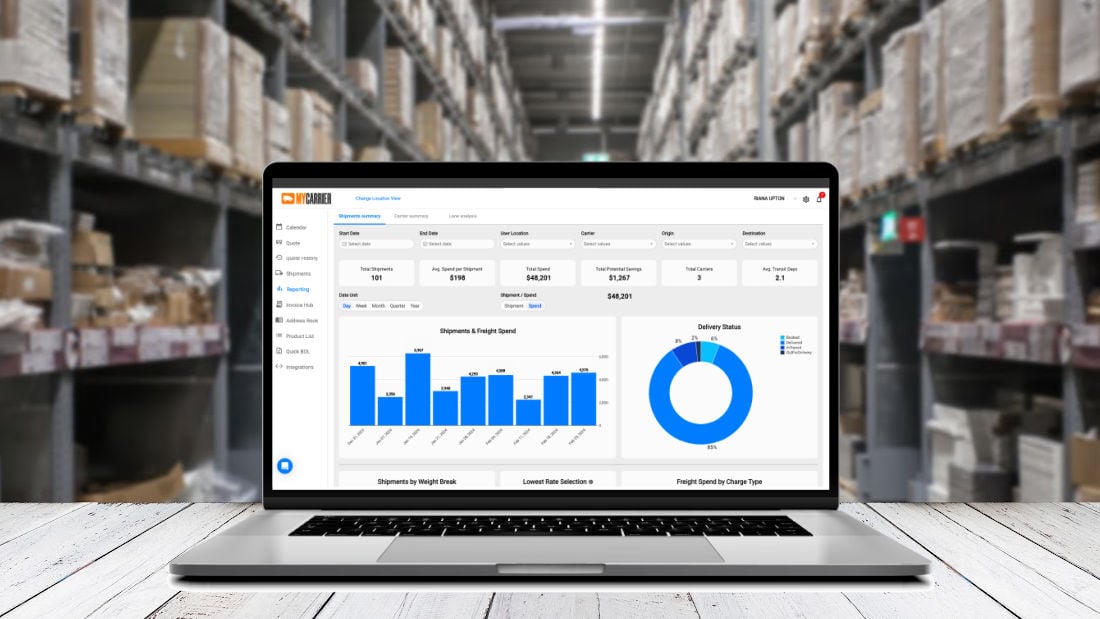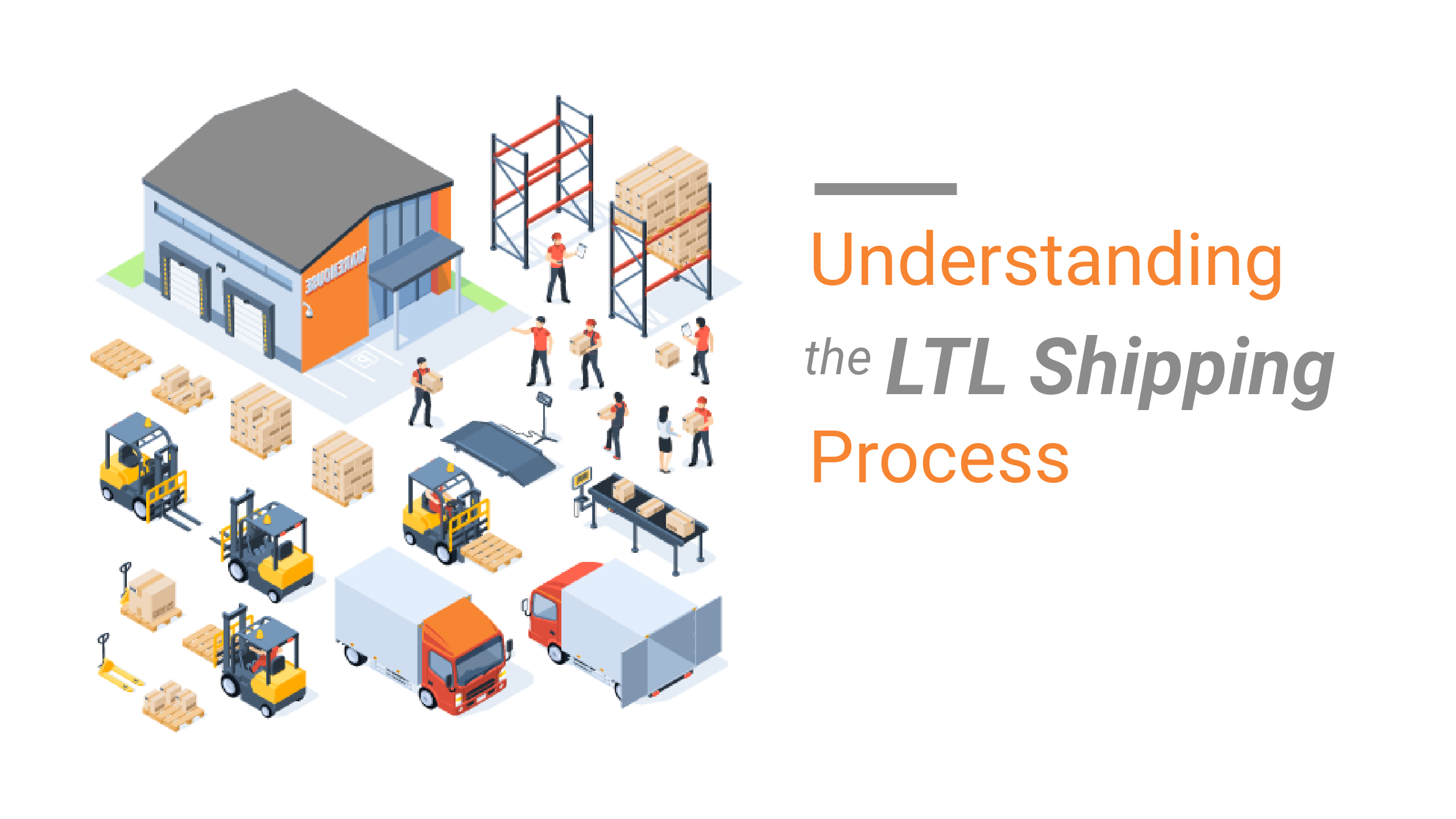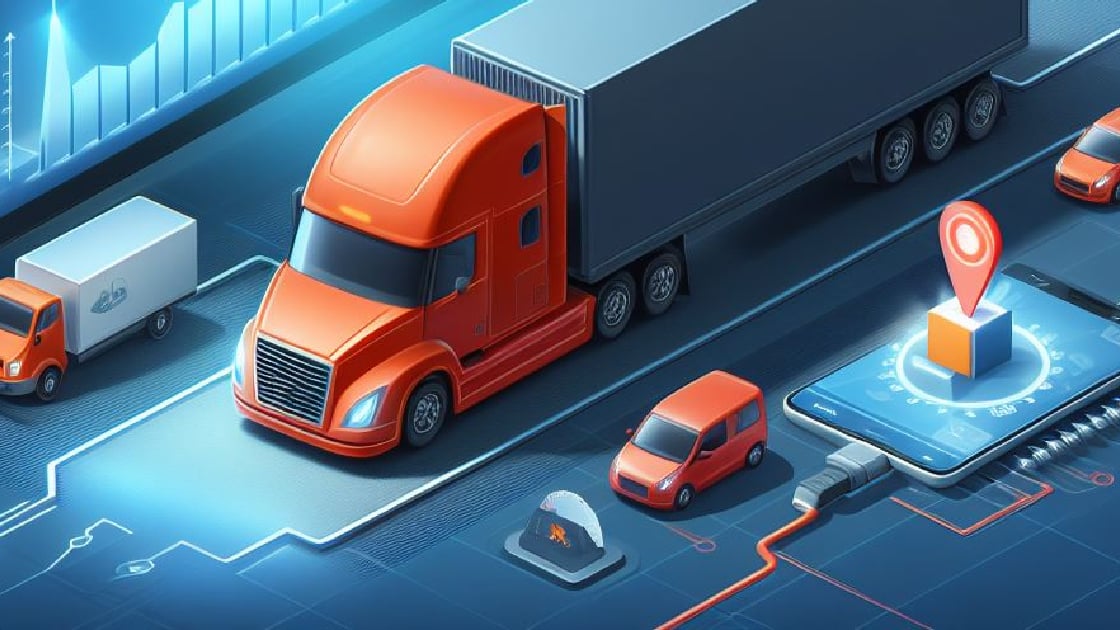How Data Gaps Lead to Overspending in LTL Shipping
In this post, we'll explore how data and visibility gaps lead to overspending in LTL shipping, causing inefficiencies and hindering optimization. We'll also provide tips on how shippers can overcome these challenges with easy access to comprehensive data and reporting.
Challenges of Data Gaps in LTL Shipping
Data gaps in LTL shipping pose significant challenges for shippers. The average shipper overspends by around 23%. Without access to accurate, real-time data, it's difficult to plan for the future and make informed decisions. A lack of information leads to unnecessary expenses as shippers miss out on cost-effective shipping alternatives and struggle to secure better rates with carriers. Without the right data, it can also be hard to determine which carriers are most cost-effective for which lanes.
Plus, data gaps can also make shippers blind to inefficiencies within the shipping process. Shippers may be unaware of areas where they can optimize operations and reduce costs within their four walls, leading to unnecessary expenses. Without knowing which levers to pull, it's impossible to increase efficiencies and optimize operations.
Shippers may also struggle to forecast and plan without comprehensive shipping data. This can result in overestimating or underestimating shipment sizes, leading to wasted space on trucks or the need for last-minute rush shipments, both of which can significantly increase freight costs.
STRATEGIES TO IMPROVE DATA AND VISIBILITY
To address data and visibility gaps in LTL shipping, shippers can implement several strategies:
1. Utilize a powerful transportation management system (TMS): Platforms like MyCarrier provide shippers with real-time visibility into their shipments, allowing them to connect directly to their carriers for real-time quoting, dispatching, and tracking. By leveraging an LTL shipping software, shippers can access accurate data, make informed decisions, and identify areas for optimization.
2. Collaborate with carriers: Establishing strong partnerships with carriers can help improve data and visibility in LTL shipping. By foregoing a middleman (such as a broker or 3PL) and digitally connecting to carriers on one platform, shippers gain access to faster dispatching (with auto-generated PRO numbers, BOLs, and labels), real-time tracking updates, and address any issues that may arise more efficiently.
3. Application Programming Interface (API): API allows for real-time, automated data exchange between shippers and carriers. This can help eliminate data gaps, improve visibility, and streamline communication, ultimately leading to more efficient and cost-effective shipping. Most transportation management systems use EDI technology, which is a slower, less efficient way to communicate. Fortunately, platforms like MyCarrier implement API, which leads to faster dispatching, live tracking, and real-time data and reporting.
4. Electronic Bill of Lading (eBOL): When utilizing eBOL technology, shippers get a digital parcel-like experience that allows for the seamless transfer of shipment details to their carriers (without the hassle and paperwork). This means fewer errors, faster dispatching, and a completely digital experience from order to invoice.
By implementing these strategies, shippers can bridge the data and visibility gaps in LTL shipping - improving efficiency, reducing costs, and making informed business decisions.
BENEFITS OF ADDRESSING VISIBILITY GAPS
Addressing data and visibility gaps in LTL shipping can yield several benefits for shippers:
1. Cost savings: By having access to accurate data and real-time visibility, shippers can make strategic decisions regarding their freight, leading to cost savings. They can choose the most cost-effective shipping options, negotiate better rates, and optimize operations within their four walls, ultimately reducing overall freight spend.
2. Improved efficiency: Data and visibility gaps hinder efforts to efficiently scale your operations. By addressing these gaps, shippers can identify inefficiencies within their shipping process and implement strategies to improve efficiency. This can result in faster transit times, reduced dwell times, and streamlined operations. Ultimately, this allows a business to successfully scale.
3. Enhanced customer satisfaction: Real-time visibility allows shippers to proactively address any issues that may arise during transit, ensuring timely deliveries and minimizing disruptions. This leads to improved customer satisfaction and loyalty.
4. Better decision-making: Access to accurate data and visibility enables shippers to make data-driven decisions. They can analyze shipping patterns, identify trends, and forecast shipping volumes more accurately. This empowers shippers to make strategic decisions that align with their business goals and objectives.
By addressing data and visibility gaps, shippers can unlock these benefits and create a more efficient and cost-effective LTL shipping process.

UNCOVER OPPORTUNITIES IN YOUR DATA WITH ADVANCED ANALYTICS
Though the list above is a great place to start, there are even more opportunities to scale your business and optimize operations with comprehensive data. MyCarrier's new Advanced Analytics feature empowers shippers of all sizes to identify trends and minimize risks.
Advanced analytics provides a comprehensive Shipment Summary, which can be used to identify inefficiencies and reduce transit time. This provides:
- The ability to view shipment-by-shipment and overall freight spend over time
- A birds-eye view of delivery statuses across all shipments
- The data needed to determine when to book your same-day shipments based on pickup history
Shippers who use Advanced Analytics can also access in-depth Lane Analysis info, providing:
- The ability to compare transit time by carrier to identify the optimal fit for each lane
- Volume, transit times, and customer costs that empower shippers to make informed decisions
- An understanding of shipment distribution and opportunities for order consolidation
The Carrier Summary provides more data for shippers who utilize Advanced Analytics. With this information, shippers can:
- Understand their carrier market share over time to help with carrier relations
- Uncover opportunities to consolidate carriers with insights into your carrier utilization over time
- Identify carrier's optimal pickup days and times for successful dispatches
CONCLUSION
Having access to comprehensive shipment and carrier reporting is not just advantageous—it's essential. By harnessing the power of data-driven insights, shippers can optimize their supply chain, improve carrier relationships, reduce costs, and enhance overall efficiency.
With detailed reporting and analytics at their fingertips, businesses can make informed decisions, adapt to changing market conditions, and stay ahead of the competition. Accessing comprehensive data and reporting isn't just a competitive advantage; it's a must in LTL shipping.




